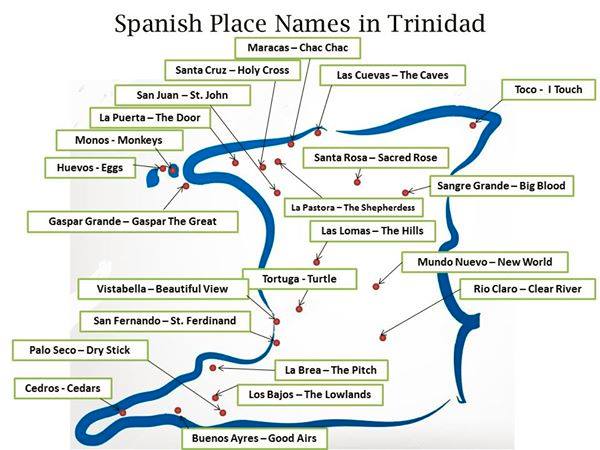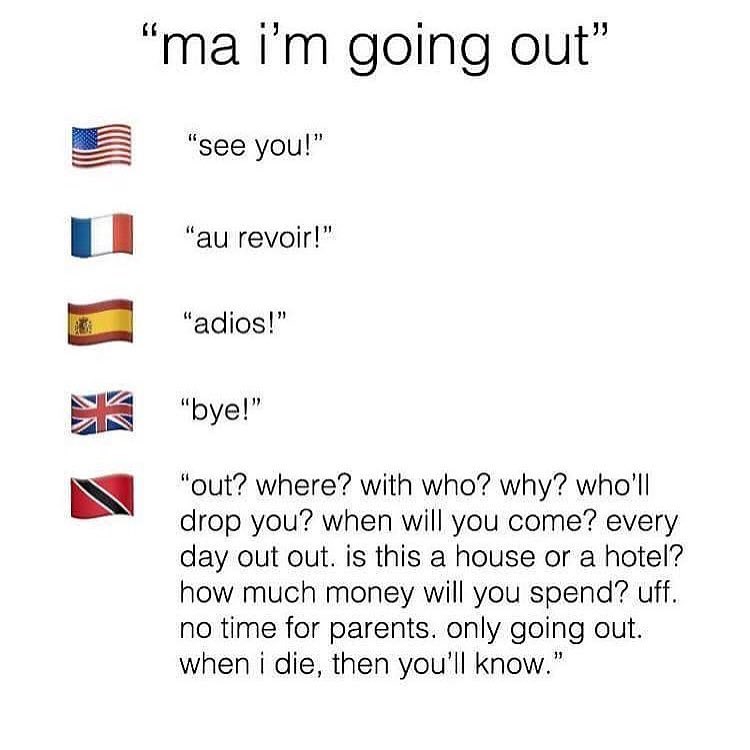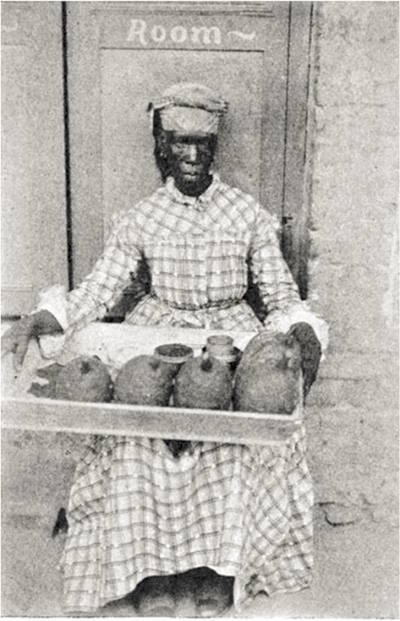|
Front (L-R): Yoland La Pierre (NGC Director), Charise Laveau, Shanade Ali, Chaela Wooding, Jenae Edwards, Shaniah Rudden, Jeanelle Looby (Teacher) Middle: (L-R) James Mohammed, Ethan Wilson, Nicholas Maharaj, Phillip Janes, Brian Ripoll, Arendel Owen Back (L-R): Zachary Joel, Daniel Harper, Sebastian Rudden, Conrad Taitt, Brandon Wooding, Deron Khelawan, Ruth Rudden (Teacher).. ST. AUGUSTINE, Trinidad, Wednesday June 18, 2014 – You wouldn’t normally expect to hear a conversation about “ionization in the earth’s atmosphere” happening between a group of twelve to fourteen year-old youngsters. But that conversation is exactly what led enterprising youth from the Caribbean nation of Trinidad and Tobago to the top prize in the Cubes In Space global contest.
Seven students from NorthGate College, in Trinidad and Tobago, captured the 2014 Cubes In Space™ MPAC Group Top Design Award, for a science experiment that will be launched into space on June 26. One member of the team, thirteen-year-old, Deron Khelawan confidently explained, “the Ionization Investigation seeks to measure the extent to which an electromagnetic field is generated as the payload moves through the ionosphere.” Their creative idea did not only impress their teachers and parents; it impressed a global panel of judges that included some of the finest minds in the aerospace industry. “The quality of thought and depth of understanding of the science behind their experiment far exceeded most of what was submitted to us by other schools and countries. The NASA engineers to whom we have shown the proposal and video were utterly impressed and astounded that the application was submitted by middle-school aged students,” said Agee-DeHart, Founder of the Cubes In Space program. The Cubes In Space program is a partnership between Rubik Learning Initiative, idoodlesoftwareinc., the Colorado Space Grant Consortium’s RockSat-C program and supported by the Sounding Rocket Program Office at NASA’s Wallops Flight Facility. Yolande La Pierre, Director at the St Augustine-based secondary school was elated when she received news of the award. “This achievement is a real testament to the potential that lives within our children. It means a lot for us and for our education system to see their creativity, determination and teamwork rewarded in this way. In a male-dominated science world, La Pierre was quick to point that there were six girls in the winning NorthGate team. One of them, twelve-year-old Chaela Wooding said. “Our project was a lot of fun, but we had to quickly learn about space and how it relates to our ordinary classes. It was a lot of hard work for us, but we were able to get it all done in time. Now we’re all waiting to see what will happen when our cube actually goes into space.” 21st Century Skills “The goals of the Cubes in Space program are to show students the interconnections between Science, Technology, Engineering, Math, Arts and Communications concepts and to teach students to become analytical and effective thinkers. Throughout the experience, students acquired key 21st century skills necessary for success in a highly connected, global society,” said Amber Agee-DeHart. “The award validated our school’s holistic, values-based approach to education”, said Dr. Noel Woodroffe, Chairman and Founder of NorthGate College, adding, “We have always nurtured our students to think beyond the curriculum. The Cubes in Space program presented a wonderful opportunity for us to witness this in action as the teamwork, creativity and excellence we strive to instill, were on full display. This is indeed a proud moment for our Northgate College family across the world.” NorthGate is an education initiative of Congress WBN, a global non-profit led by Dr. Woodroffe, with operations in over 85 countries. The school, which started in Trinidad in 1999, now has centers in Jamaica, Kenya and Zambia and soon will shape more young minds for the 21st century with new centers in Nigeria and New Zealand. Team member Zachary Joel, captured this international outlook of the school, saying, “Our teachers always tell us we are global and borderless. With this project I learned we can be borderless inside of a 4cm cube.” . Nurturing Young Minds “Nurturing the young minds of the future with programs like Cubes In Space helps build the business and scientific leaders of tomorrow,” said Nicholas Andrews, Managing Director of The MPAC Group, London, sponsor of the Cubes in Space Top Design Award. For NorthGate, building global leaders is already a deliberate target, and technology is the enabler. Their students in Trinidad and Tobago regularly use the Internet to connect with other NorthGate counterparts around the globe. Teachers also use technology to allow experts and mentors from around the world to share their experience with eager youngsters. That comfort with the technology allowed them to interview engineers and physicists from the Caribbean, US and the UK in the process of moving their idea from a concept to an actual experiment. The team saw no limits to what they could accomplish. “Everyone’s idea counted; whether it’s something minor like coming up with the name for the experiment, or the design for cube, or tools we could use. But everyone had to be confident with their contribution. We told ourselves even though we are from a small island in the Caribbean, we can make an impact on the world,” said fourteen-year-old team member Sebastian Rudden. To Infinity and Beyond And what an impact they are already making. The Northgate College experiment along with the other designs from around the world will be launched into space via sounding rocket from NASA’s Wallops Flight Facility on Wallops Island, VA on June 26th, 2014. Well before their experiment launches into space, though, the buzz around the achievement of NorthGate will already have been lifted through the stratosphere. Read more: http://www.caribbean360.com/news/trinidad-based-northgate-college-wins-global-award-for-best-space-experiment#ixzz5I35o67Am Source: Caribbean 360 June 18, 2018  Watching the Moon landing in 1969 on TV with her family in South Trinidad sparked Embry-Riddle Aeronautical University graduate student Karen Brun’s interest in the NASA space programme. A worldwide graduate student, she spent 45 days in an analog spaceship and completed a NASA internship. Through a 32-year career in the US Air Force, where Brun specialised in aviation and air mobility operations serving as a C-5 Galaxy Flight Engineer, she never lost sight of her interest in space. As Brun prepared for civilian life, she acquired FAA licenses and ratings including Instrument Rated Private Pilot; Remote Pilot; Aircraft Dispatcher; Airframe and Power Plant Mechanic; and Flight Engineer (Turbojet). She stayed committed to aviation safety and human factors by participating in flying simulations as part of an ongoing FAA-sponsored study researching possible causes of weather-related general aviation accidents. The Embry-Riddle Aeronautical University Worldwide Campus student finished 45 days in a simulated space habitat this past fall as part of NASA’s Human Exploration Research Analog (HERA) at Johnson Space Center in Houston. HERA is a unique three-story structure designed to serve as an analog for isolation, confinement, and remote conditions in extraterrestrial exploration scenarios. Following HERA, she recently completed an internship this spring with NASA’s Armstrong Flight Research Center at Edwards Air Force Base in California. Brun’s road to NASA has been paved with people she met along the way at Embry-Riddle and programmes that gave her the needed skills from coursework to assistance from Career Services and her graduate Worldwide Campus academic advisor. In 2015, Brun, who has three associate degrees from the Community College of the Air Force and a Bachelor of Science in Applied Science and Technology from Thomas Edison State University, shared her future goals with Dr Brent Terwilliger, assistant professor of Aeronautics and programme chair for the Embry-Riddle Worldwide Campus’s new online Master of Science in Unmanned and Autonomous Systems Engineering degree programme. His advice led her to enrol in the master’s Unmanned Systems programme with a specialisation in Space Systems. During her time at Embry- Riddle, she has also participated in the Project PoSSUM Citizen- Scientist Astronaut Programme, an intense astronaut-like training programme where students receive instruction in how to use a spacesuit, high-altitude and hypoxia awareness and aerospace physiology. While participating with Project PoSSUM, Brun learned about NASA’s HERA programme and was selected as a mission specialist for the HERA XV mission after a rigorous application process, including physical, psychological and technical skills testing. “That is why Embry-Riddle is so important,” Brun, who was born and raised in Marabella, said. “If I wasn’t associated with Embry-Riddle, I would not have been able to do all these things.” HERA missions, which began in 2014, are one of several ground-based analogs used by NASA’s Human Research Programme (HRP) to study ways to help astronauts move from lower-Earth orbit to deep space exploration. The programme works to improve astronauts’ ability to collect data, solve problems, respond to emergencies and remain healthy during and after extended space travel. With the goal of travelling to Mars and beyond, the programme is using ground research facilities, the International Space Station (ISS) and analog environments to develop these procedures and to further research areas that are unique to Mars. The HERA XV mission, which ended in December, looked at behavioural health and performance assessments, communication and autonomy studies, human factors evaluations and medical capabilities assessments. Brun and her three co-mission specialists lived in the small, cylindrical 636-square-feet habitat for 45 days. The total mission also included 14 days of pre- and seven days postconfinement. Inside the habitat, she worked on projects to help with future missions to Mars, including testing various hardware prototypes and applications used on the ISS. Her team used various simulations in growing food and plants, and they ate similar packaged food that astronauts consume on the ISS, from scrambled eggs and pancakes, to steak and ribs. Experiments with sleep and circadian rhythms (a 24- hour internal clock that cycles between sleep and being awake) tested their alertness. Virtual reality spacewalks (extravehicular activity) simulated travelling to an asteroid and collecting samples. “This is why HERA is so important. A lot of what we did involved current technology and testing it in simulated conditions,” Brun said. “My commitment is not only to the space programme, but to humanity and where we go as a species into deep space.” Brun’s future plans include applying to the Human Factors doctoral programme at Embry- Riddle after finishing her master’s degree. “Human Factors (the study of how people interact with technology, tools, environments and systems) is what will get us to Mars,” Brun said. “Can we as humans sustain the seven and a half months, one-way trip to Mars? We have the technology, but can we get there? I want to be part of the NASA space programme working toward getting people ready to go into space.” Roth Britton, Brun’s graduate academic advisor at Embry- Riddle’s Worldwide Campus Department of Online Education, said since his first “welcome” call to Brun, she has been motivated and excited for opportunities ahead. “She has been looking for ways to grow and pursue the things she is passionate about every step along the way,” Britton said. “I am very proud of her and expect big things as she moves forward on her journey.” Anyone interested in finding out what it takes to participate in a HERA mission, can go to nasa.gov/analogs/hera/want-toparticipate for more information. Source: Guardian, June 9, 2018. In Trinidad some of the first areas to be settled, charted or explored by early colonists still bear Spanish derived names, which reflect and contribute to our unique cosmopolitan history. This map shows location of towns and villages with Spanish names in Trinidad. ( Source Trinidad and Tobago Communities).
It is interesting to note , however that our Spanish heritage is not merely confined to names of villages and towns in our multicultural society. It is evident in our surnames, our music, our food, drink, holidays, festivities and in many of our traditions. Source: Virtual Museum of Trinidad & Tobago A marchande of 1910 selling breadfruit from a wooden tray. “Poisson frais, poisson, poisson ..fressh feesh!” This would be the chant of the fish vendor while the mists still lay on the green hills overlooking the Port-of-Spain of the 19th and early 20th centuries. Those were the days of the marchandes, or vendors, who brought the means of sustenance to many homes in the city.
The establishments of the white and coloured elites, in their fine residences around the Savannah, could afford a cook whose duties began at 5 am, heading to the Eastern Market on Charlotte Street to purchase meat, fish and vegetables for the daily meals. Those who could not make the trek to market preferred to wait on the marchandes, who with unflagging certainty would present themselves at the front gate (or the pantry door of the homes of gentility, where they would not be permitted to walk up to the front door). In addition to the fish vendor, there would be purveyors of fowls called marchande poule selling trussed-up live chickens. The fruit of the land would also be sold from wooden trays—peewah, topi tambo, pois doux and other natural treats. Speaking of treats, there would also be marchandes who were favourites of the children, since their goods would be of a more toothsome nature, comprising coveti pocham (a large ginger biscuit resembling a chamber-pot cover, hence its name), lavanie (miscellaneous sugar sweets), toolum, sugar cakes and tambran balls. Starch cakes for washing would also be among the stock in trade of the marchandes. The marchandes themselves would be a sight to behold in their voluminous dresses, with Martiniquen head-kerchiefs knotted around their heads most picturesquely. For all their cheery appearances, the marchandes generally had hard lives, few earning enough to purchase a tiny cottage in Belmont or Laventille to accommodate their old ages. They were but a single company in the army of hucksters who descended on the city every morning, bringing it the necessaries of daily life. Indian men in donkey carts would go from house to house selling fresh vegetables, rivalled only by their Chinese counterparts, who balanced filled baskets on either ends of a pole slung across their shoulders while they shouted, “Pima pepper, cucumbo-o-o, okolo-lo, tomato-o-o, water kyssle.” Then too there would be other Chinese lugging dripping wicker baskets of oysters which they would shuck with startling rapidity, providing excellent hors d’oeuvres for when gentlemen called on their peers for an afternoon cocktail. Madrassi men on donkey carts from St James and Boissiere Village would sell bundles of grass at a cent apiece for those who kept horses, while their women peddled milk from a tin pail, which was often adulterated with water (sometimes stagnant pond-water, including tadpoles). More unusual additions to the morning commercial army included vendors of turtle eggs (harvested freshly laid from the sands of the East Coast) and a slightly deranged Frenchman who sold and repaired umbrellas from the 1870s until he faded away in the early 1900s. Today the marchande is but a distant memory Source: The late Angelo Bissessarsingh Another Trini making news - check it out here
This was brought to my attention by yet another Trini author, Anne Marie Meyers, living and working in Toronto. Here is what she had to say: "Remember the interview I did back in February 2017 about a young girl and her mother creating a magazine called 'Contagious'? with the aim of writing articles featuring positive accomplishments by kids? Well their magazine has gone national, and guess what, they are from Trinidad. Feeling proud here. This is the link to the interview and below you will see them being interviewed on television. . |
T&T news blogThe intent of this blog is to bring some news from home and other fun items. If you enjoy what you read, please leave us a comment.. Archives
May 2025
Categories
All
|





 RSS Feed
RSS Feed